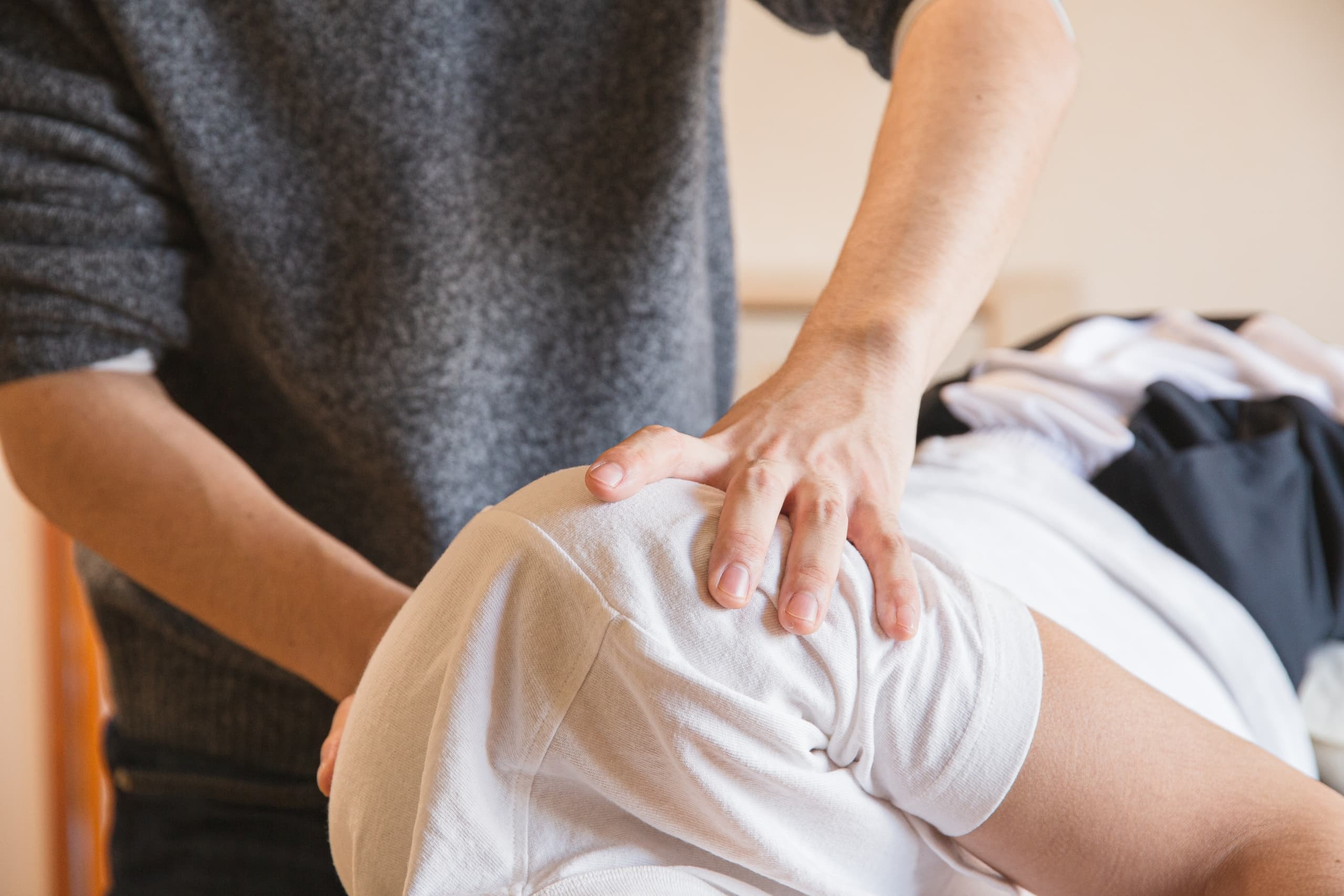How to Use Dual Bar Decompression for Lower Back
Spinal Decompression Therapy: In-Home Options
If you are like many people, your work might have you spending hours a day sitting at a desk hunched over a computer or upright on your feet. This can put a tremendous strain on the muscles in the lower back, neck, shoulders, and joints. If not treated properly, this can lead to a more severe injury down the line, such as sciatica, herniated disc, and nerve damage. In many cases, this pain can be managed by a simple daily routine of using spinal decompression at home.
What are the benefits of doing spinal decompression at home?
Practicing spinal decompression at home has many benefits. In most cases, there is little need for drugs other than an over the counter anti-inflammatory options. And because the process is virtually pain-free, some patients even find the treatments to be relaxing. There is very little chance of being injured during the process, with less risky side effects than having surgery. Sessions can also be done in as little as 10-15 minutes a day with no downtime needed after. This form of non-invasive therapy is also very cost-effective, making it accessible to those who can't afford other types of treatment.
How does spinal decompression work to relieve pain?
Spinal decompression works by gently stretching the spine, changing the force and position of the discs by using negative pressure to straighten it out. This alleviates tension and pain by allowing increased blood and oxygen levels to enter the spine. When done correctly, the process should be pain-free, and the patient should only feel a pleasant stretch.
How to Do Spinal Decompression at Home
If you are suffering from lower back pain and are looking to relive the uncomfortable symptoms associated with it, there are some basic exercises you can do right at home. Each activity is low impact and can be performed by most people without the help of a doctor or trainer.
Bar Hang-Ups
Using a chin-up or pull-up bar, reach up to grab the bar and allow yourself to hang from it. You may increase the amount of bodyweight you feel comfortable with by relaxing to deepen the stretch. Hold the position for 10-30 seconds, depending on your comfort level. Then lower yourself to the ground by placing feet flat on the floor in a standing position. Repeat this exercise for 4-6 reps, taking a short break in between each one. This exercise can be done 2-3 times per day.
Cat-Cow Exercise
This is done as a floor stretch and requires no equipment at all. Start by getting down on all fours. Position your palms right below your shoulders, and make sure your knees are in line with your hips. While in this position, arch your back downwards by pushing your torso towards the ground (this is the cow pose). Come back up to a normal position, this time pushing your torso towards the ceiling, creating an arch (this is the cat pose). Alternate between the two positions, holding each one for 2-5 seconds at a time. There should be no rest moving between the two positions during each rep. Each time you move from the cat position to the cow position is considered one rep. Complete 20 repetitions 3-4 times a day
Overhead Stretch
Begin by standing upright with your feet shoulder-width apart. Lock your fingers together and bring your arms overhead, making sure your elbows are completely straight. Reach up towards the ceiling. Hold the stretch for 20-30 seconds. Do 4-5 reps multiple times a day as needed.
Prayer Stretch
Begin on your hands and knees. Sit back with your bottom touching your heels. Reach out with both arms in front of you on the floor and relax into this position. Hold this pose for 10-15 seconds. Repeat these steps alternating the direction you reach your arms from forward and then to each side (left side and ride side). Repeat the stretch in each direction three times. You may do this stretch multiple times a day as needed.
Self-Massage
Patients suffering from lower back, shoulder, or neck pain have also found relief from using self-massage. This requires minimal equipment and, in many cases, can be done simply with your hands or a tennis ball.
To use a tennis ball for a lower back massage, begin by positioning a tennis or massage ball between your lower back and a wall. Gently but firmly move your body up and down, or side to side to find areas of muscle tension. Apply a strong pressure in the spots that feel most tender. Repeat until muscles begin to feel relaxed.
To relieve shoulder pain, position your fingers of your right hand over your right shoulder. Squeeze the upper part of your shoulder three times. Then, firmly roll your fingers over the muscle, beginning from the outside, moving towards the base of your neck. Repeat these steps for your left side.
To relieve neck pain using your hands, simply place two or three fingertips on the back of your neck where your neck meets your shoulders. Apply firm pressure and hold the area. Release the hold when the muscle begins to feel relaxed. Then, roll your shoulders forward and backward slowly. Repeat the steps three times.
Who Can Benefit From Spinal Decompression?
Commonly, the people that have found the most significant relief with spinal decompression are the ones with low back pain that is associated with numbness or tingling. You may discover spinal decompression is also very beneficial if you suffer from low back pain caused by poor posture and pain that radiates down the leg. Patients that have seen relief from this type of therapy are:
- People with joint problems
- People with bulging discs
- People with neck pain
- People suffering from nerve pain
- People with sports injuries such as ligament sprains or muscle strains
Who Should Not Do Spinal Decompression at Home?
While spinal decompression is a very non-invasive and straightforward form of treatment for lower back pain, those who are diagnosed with the following conditions are at greater risk for injury and should not attempt spinal decompression at home:
- Women who are pregnant
- Older adults, especially those suffering from advanced osteoporosis
- Those suffering from a spinal fracture
- Those who are diagnosed with a tumor
- Those who have suffered an abdominal aortic aneurysm
- Those suffering from a herniated disc
- Those who suffer from narrowing of the intervertebral foramen
- Those who have metal implants in the spine or who have undergone spinal fusion surgery
- Those who suffer from spinal nerve or root swelling
- Those who suffer from joint hypomobility
These conditions are considered very high risk. It is imperative to speak to a medical professional before starting any form of treatment therapy on your own. Practicing spinal decompression at home with any of the above-listed conditions could lead to the worsening of symptoms. Additionally, this could lead to nerve damage, increased pain or swelling, and severe injury and harm to an unborn child if you are pregnant. If you experience any pain or numbness while doing spinal stretches at home, you should stop immediately and contact a medical professional. These symptoms may indicate the need for assisted spinal decompression therapy from a trained professional.
Conclusion
While living with lower back pain can be a burden on your day to life, there is help to get you back on your feet and manage the pain. Let the professionals at MacKenzie SDI help you get on the right track. MacKenzie SDI clinic in Coquitlam, British Columbia, specializes in Spinal Decompression Therapy, Chiropractic Care, Orthotics, and Class IV Laser Therapy. Our expert staff is dedicated to helping you diagnose and treat your back pain related problems so you can get back to living a healthy, pain-free lifestyle. We offer many services, including chiropractic adjustments and non-surgical pain relief due to a back injury. Combining the most up to date technology with traditional pain management techniques, Mackenzie would like to help you find a pain management solution to suit your specific needs. Learn more about spinal decompression here about how you can manage your back pain at home as well as how to schedule a free consolation with a specialist today.
Related Articles

Chiropractor While Pregnant – What to Know
Oct 21, 2021
Visiting a Chiropractor While Pregnant Along with the immense excitement that comes with being pregnant, strict rules, regulations, and restrictions follow right behind. While there is some universal guidance, e.g. don't smoke while expecting, other limitations are up to the individual. Chiropractic care, for instance, is considered to be actually rather beneficial to those who […]
Read More

Full Body Chiropractic Adjustment
Sep 30, 2021
If you've ever experienced chronic or recurring pain, then you know how frustrating it can be. For pain relief that is holistic and non-invasive, consider trying full-body chiropractic adjustment. Not only does it relieve discomfort due to injury or overuse, but its long-term benefits include better organ function, blood flow, and joint flexibility. Whether it's […]
Read More

How Often Should You Get a Chiropractic Adjustment?
Sep 9, 2021
Seeking Chiropractic Treatment: How Often Should You See A Chiropractor? Chiropractic care varies from person to person. The frequency of appointments is dependent on the type of injury, its severity, and the treatment plan prescribed. Your specific plan is generally determined by you and your chiropractor. Whether you're seeking treatment for back pain, neck pain, […]
Read More
How to Use Dual Bar Decompression for Lower Back
Source: https://mackenziesdi.com/blog/spinal-decompression-at-home
0 Response to "How to Use Dual Bar Decompression for Lower Back"
Post a Comment